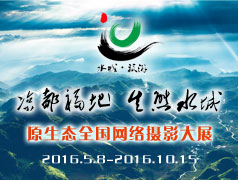主题阐释
Overview
寨生,意指寨子里生发出来的祖先记忆和文化视像。寨子在中国的原始聚落中为最小单元,贵州寨子如一个小小区隔,在大山之间一方偏僻之处十几户到上百户人家,多民族聚集生活,与自然和谐共生,农耕劳作生长出祖先崇拜的圣神仪式,精微繁复的手工是手工者对神灵和祖先的敬畏,是自己和灵界对话的媒介,是看待世界的纯粹审美和公正对待世界的原初表达。
“Born in Villages” (寨生,zhài shēng) refers to the ancestral memories and cultural imagery of village life. Zhài zi (寨子) are the original and smallest unit of settlement in China. Zhài zi in Guizhou province are inhabited by 40-plus different ethnic minority groups, living in communities of several dozen to a hundred or more households.
贵州多民族手工艺存留的符形直接承接上古时期的文明,对探寻中国文明之源具有重要价值。一直被广泛视为贵州民间艺术不仅仅是民间艺术,而是上古新石器时代部族、方国的遗留,相当于国家这一级意义的遗产。一代代的民族迁徙史和保守性神灵文化使其得以传承,或者是祖先崇拜的需要以及族群定义的神学意义,使其在固执的仪式场域和生活场景得以传习,代代相传上万年。而贵州多民族手工艺所承载的文明起源的重要性,如果不被认知她对上古文明起源的伟大贡献,我们将永远不能认识到它的重要价值和意义。
For many zhài zi inhabitants, farming is not only a means of sustenance— it is a way of honoring their ancestors. Making handcrafts is not only a hobby—it is a ritual act, and a communication medium between living and spiritual worlds. Spiritual and material sustenance are inextricable from one another in the zhài zi.
贵州多民族文化具有后现代主义审美的价值取向,民族手工保留上古文明的珍贵符型,留存的手工艺不仅属于中国,也是这块土地留给世界最宝贵的贡献。贵州的多民族文化不仅仅在中国是突出的文化多样性表达,在人类文明史的工艺美术史中含有非常重要的份额。我们相信,集聚具有文化使命感和创意精神的一群人,在一起带着对贵州多元文化价值的认知和认同,参与多学科多族群互动交融,城市和乡村交流互生,将引领手工记忆新的生命力,新的中国流行文化将生长起来,让手作之美为传统价值的媒介向世界表达中国,并代表中国的传统价值观和中国文化与世界交流和对话。
The symbols and patterns of Guizhou ethnic handcrafts record traditions that have been passed down for over 10,000 years. Today, we honor this rich cultural legacy by celebrating the contributions of these crafts and their craftmakers in the contemporary context.
我们认为,建立城市和乡村互动和交流的平台,让城市更多参与到本土乡土文化的认知和实践中来,城市支持乡村手工艺者共同参与协助进入市场,实现以市场为导向的经济发展、文化传承和环境保护。一直以来,我们以艺术的眼光来审视民族手工艺,以乡村艺术家的身份来看待手工者和传承者,认为不断在城市的展览交流活动中,能增强乡村艺术家自身的能力,在多元文化在互动中再生,能让更多的人认知到贵州多民族手工艺的历史价值与当代叙事同等重要。
As the pieces in this show demonstrate, the aesthetic appeal of Guizhou
ethnic handcrafts has lasted the test of time. We believe that leveraging market
demand for these handcrafts has significant potential to improve the livelihoods
of ethnic minority craftmakers. The Citi-Guizhou Handcraft Development Project
has spent the past five years coordinating with village artists, academics,
government institutions, and creative enterprises to develop a market-oriented
rural development model that is culturally sensitive, economically sustainable,
and environmentally sound. This is a task that can only be achieved though
“crossing boundaries”— between disciplines, geographies, and cultures.









